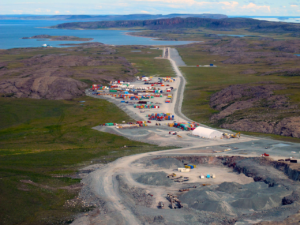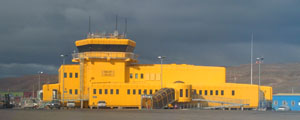
Nunavut is the largest and northernmost territory of Canada. It was separated officially from the Northwest Territories on April 1, 1999, via the Nunavut Act and the Nunavut Land Claims Agreement Act, which provided this territory to the Inuit for independent government. The boundaries had been drawn in 1993. The creation of Nunavut resulted in the first major change to Canada’s political map since the province of Newfoundland was admitted in 1949.
The capital Iqaluit (formerly Frobisher Bay), on Baffin Island in the east, was chosen by a capital plebiscite in 1995. Other major communities include the regional centers of Rankin Inlet and Cambridge Bay.
Nunavut is the least populous of Canada’s provinces and territories. One of the world’s most remote, sparsely settled regions, Nunavut has a population of 39,589 (2021) consisting mostly of Inuit people.
Nunavut also includes Ellesmere Island to the far north, as well as the eastern and southern portions of Victoria Island in the west, and all islands in Hudson, James and Ungava bays, including Akimiski Island far to the southeast of the rest of the territory. It is Canada’s only geo-political region that is not connected to the rest of North America by highway.
The Legislative Building of Nunavut in Iqaluit
Nunavut experiences a polar climate in most regions, owing to its high latitude and lower continental summertime influence than areas to the west. In more southerly continental areas, very cold subarctic climates can be found, due to July being slightly milder than the required 10 °C (50 °F).

Photo: The Hope Bay gold mine is one of three major mines in the territory
The economy of Nunavut is driven by the Inuit and Territorial Government, mining, oil, gas, and mineral exploration, arts, crafts, hunting, fishing, whaling, tourism, transportation, housing development, military, research, and education.
The new Canadian High Arctic Research Station CHARS is planning for Cambridge Bay and high north Alert Bay Station.
Iqaluit hosts the annual Nunavut Mining Symposium every April, a tradeshow that showcases the many economic activities ongoing in Nunavut.
There are currently three major mines in operation in Nunavut. Agnico-Eagle Mines Ltd – Meadowbank Division. Meadowbank Gold Mine is an open pit gold mine with an estimated mine life 2010–2020 and employs 680 persons.
Tourism recreation in Nunavut include activities like dog sledding, snowmobiling, cultural festivals, hiking, arctic wildlife safaris and sea kayaking.

Photo: Iqaluit Airport
Marine Transportation Services (MTS) formerly Northern Transportation Company Limited (NTCL) is a marine transportation company operating primarily in the Mackenzie River watershed of the Northwest Territories and northern Alberta, and the Arctic Ocean using a fleet of diesel tug boats and shallow-draft barges.
Iqaluit Airport serves Iqaluit, Nunavut, Canada and is located adjacent to the city. It is operated by the government of Nunavut. It hosts scheduled passenger service from Ottawa, Montreal, Rankin Inlet, and Kuujjuaq on carriers such as Canadian North, and from smaller communities throughout eastern Nunavut.

Photo: One of the Arctic College buildings in Cambridge Bay
There are no universities in Nunavut. Nunavut Arctic College is the only institution of higher education. It offers a small number of degrees in conjunction with Dalhousie University – Nunavut Nursing Program, University of Regina – Nunavut Teacher Education, University of Prince Edward Island – Master of Education in Leadership and Learning program, and the former Akitsiraq Law Program.
Source of the majority of Photos and Content of this page: Wikipedia
It is your duty in life to save your dream
AMEDEO MODIGLIANI